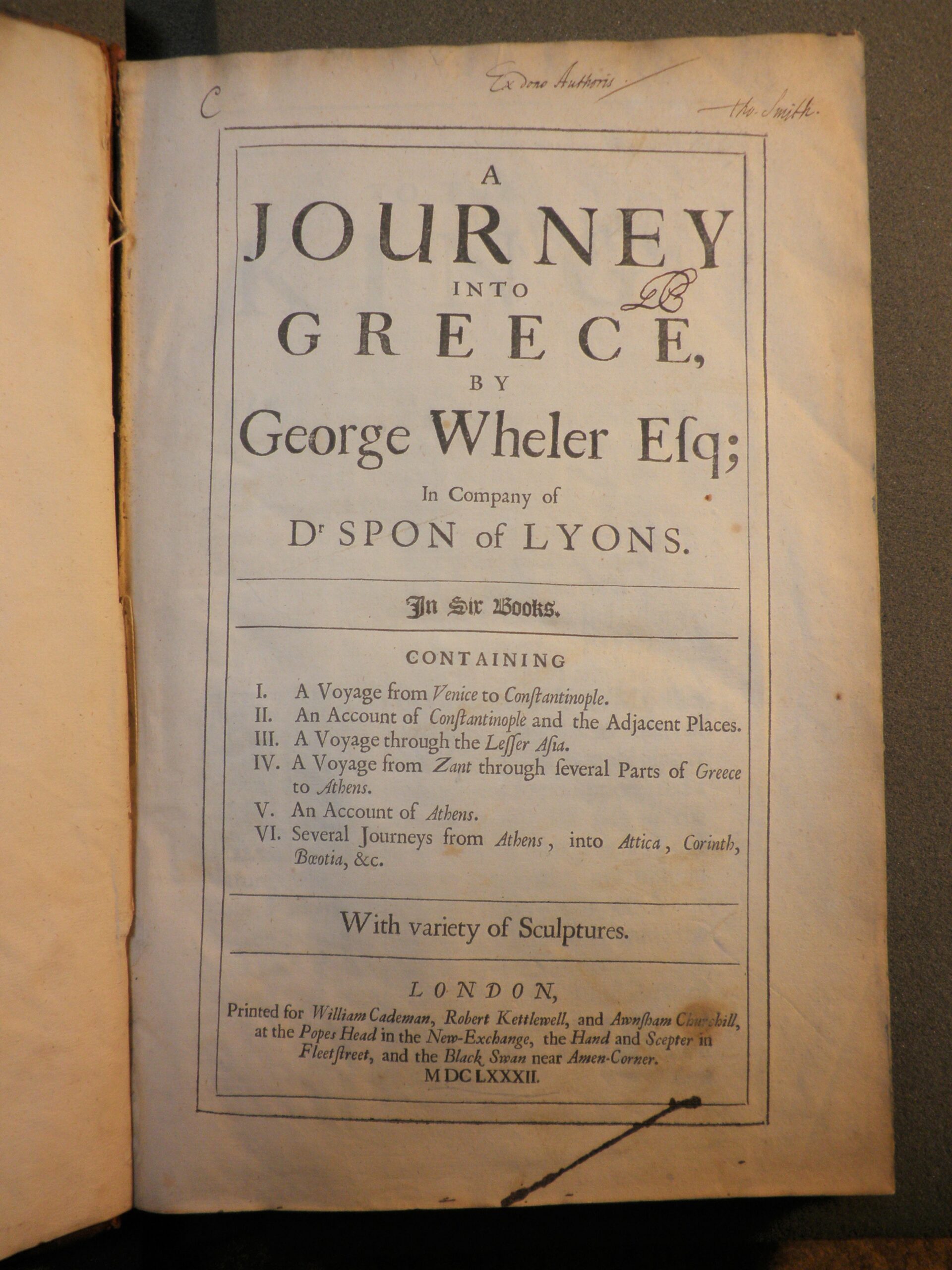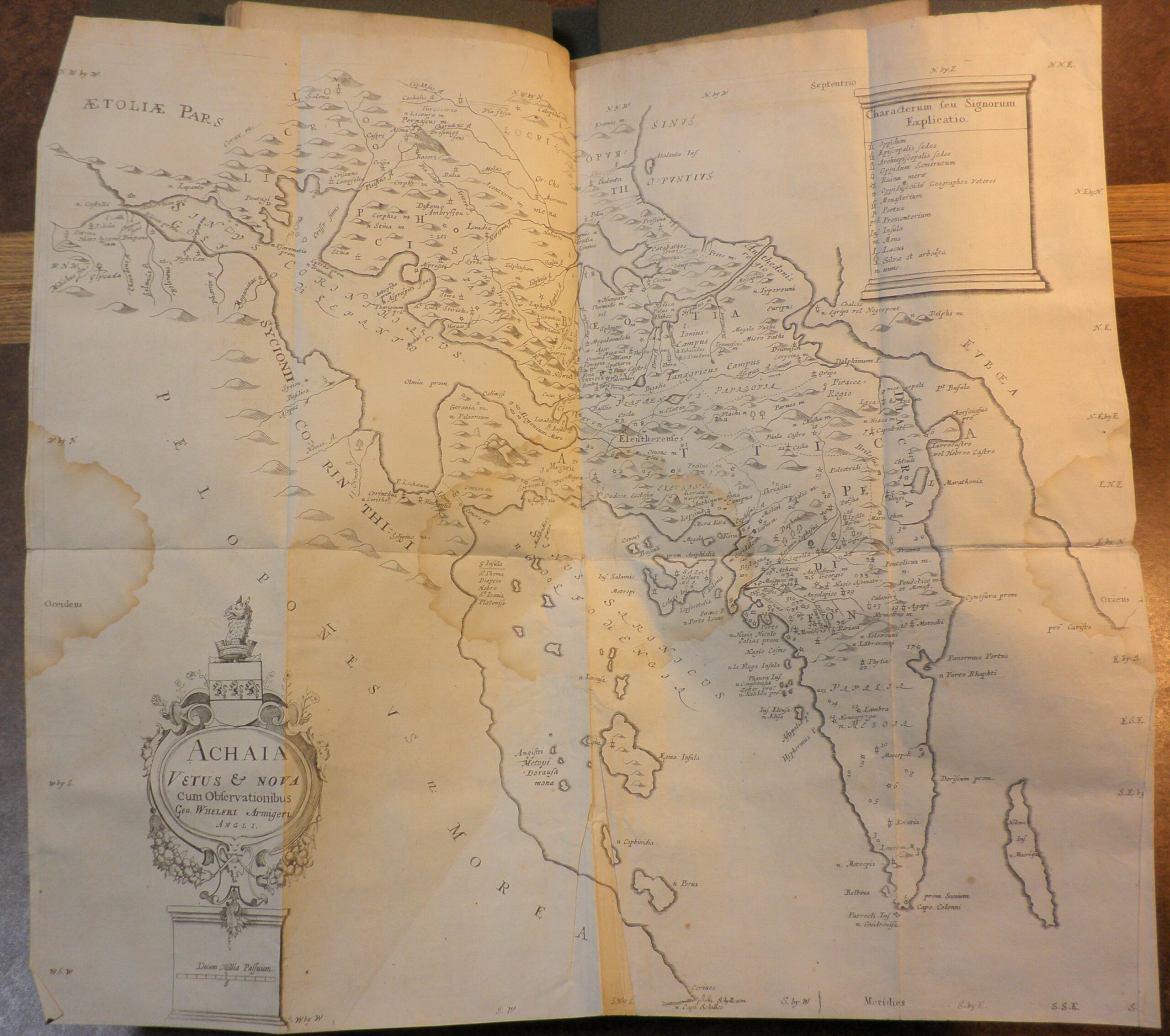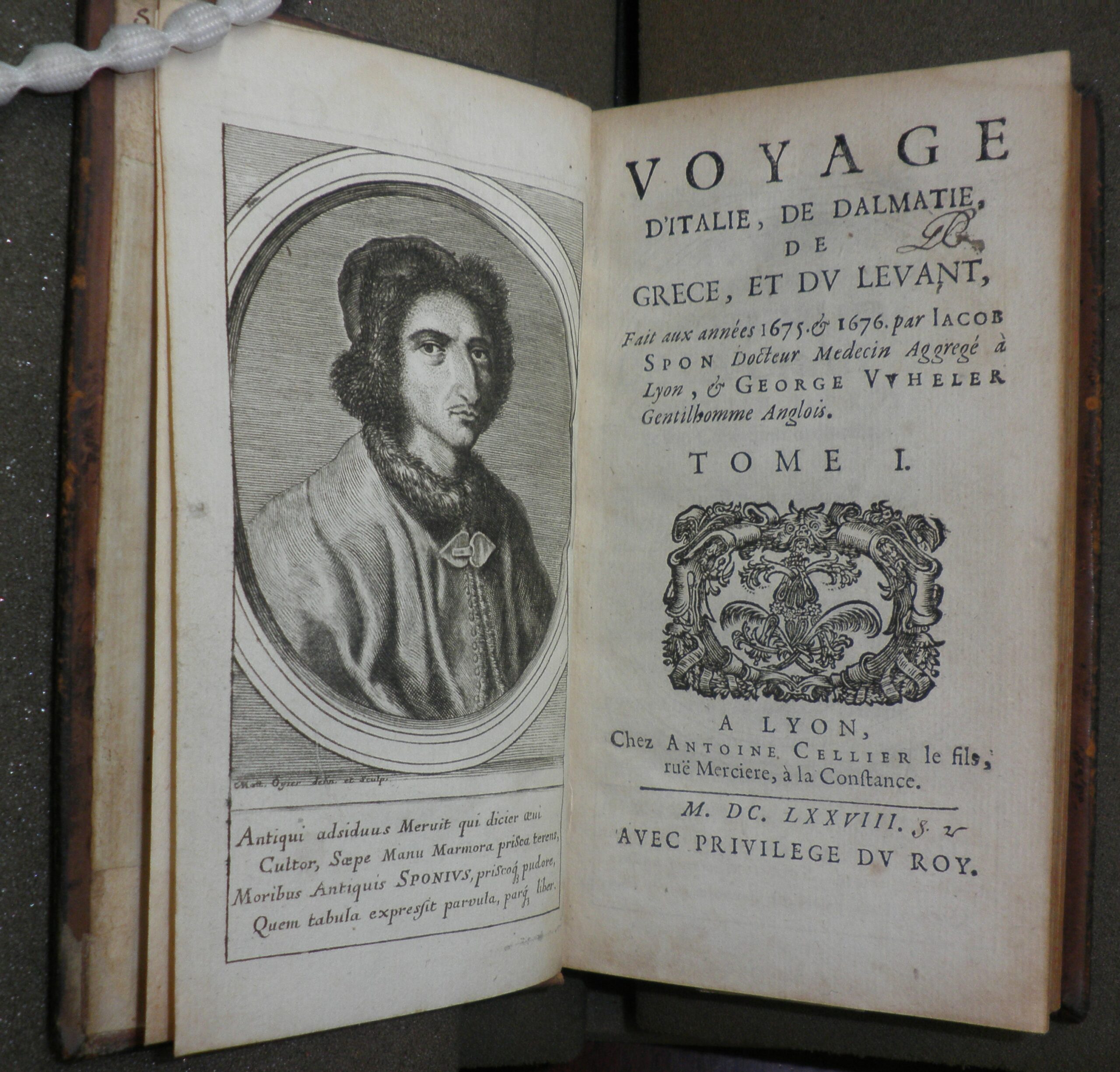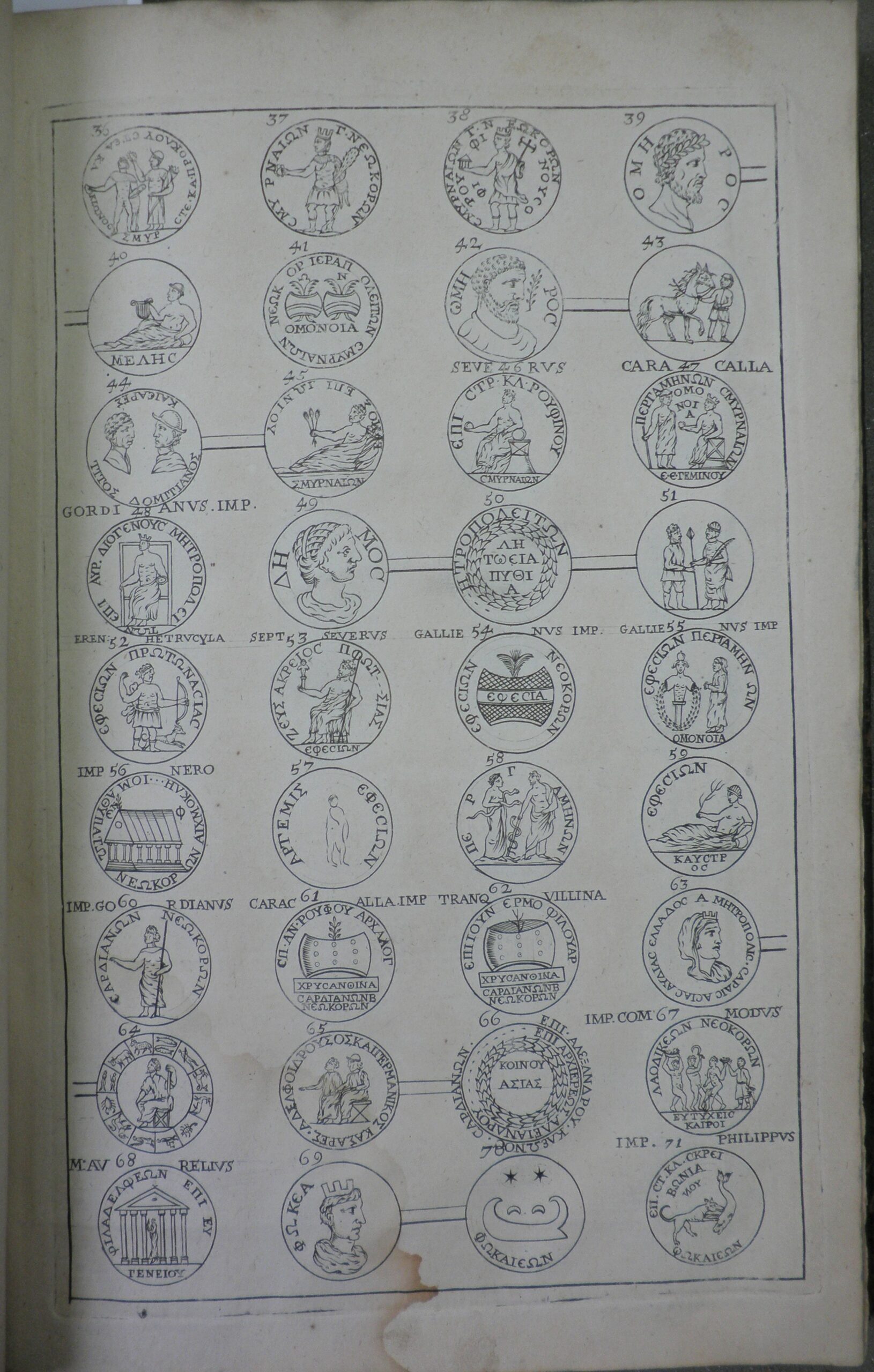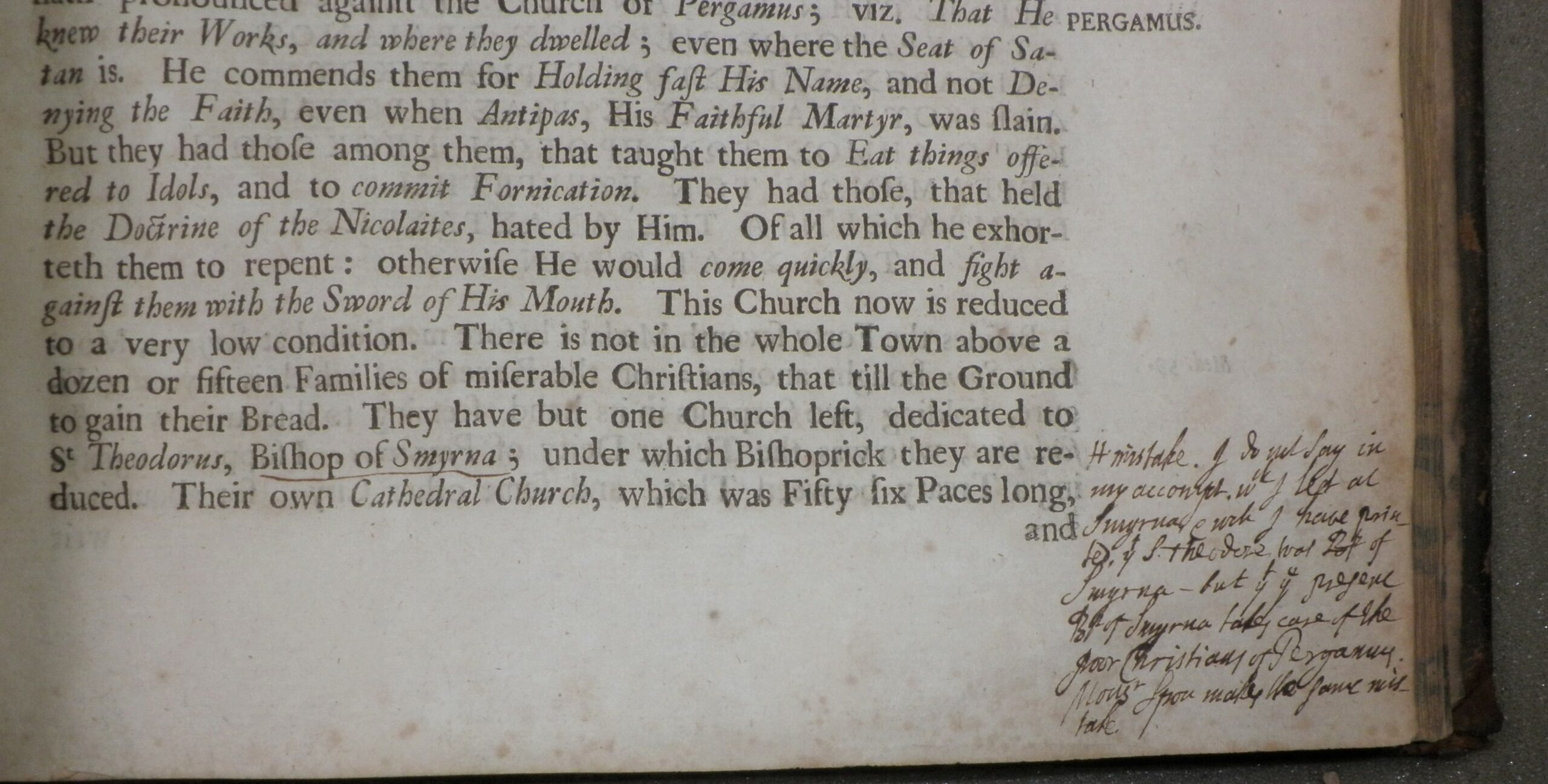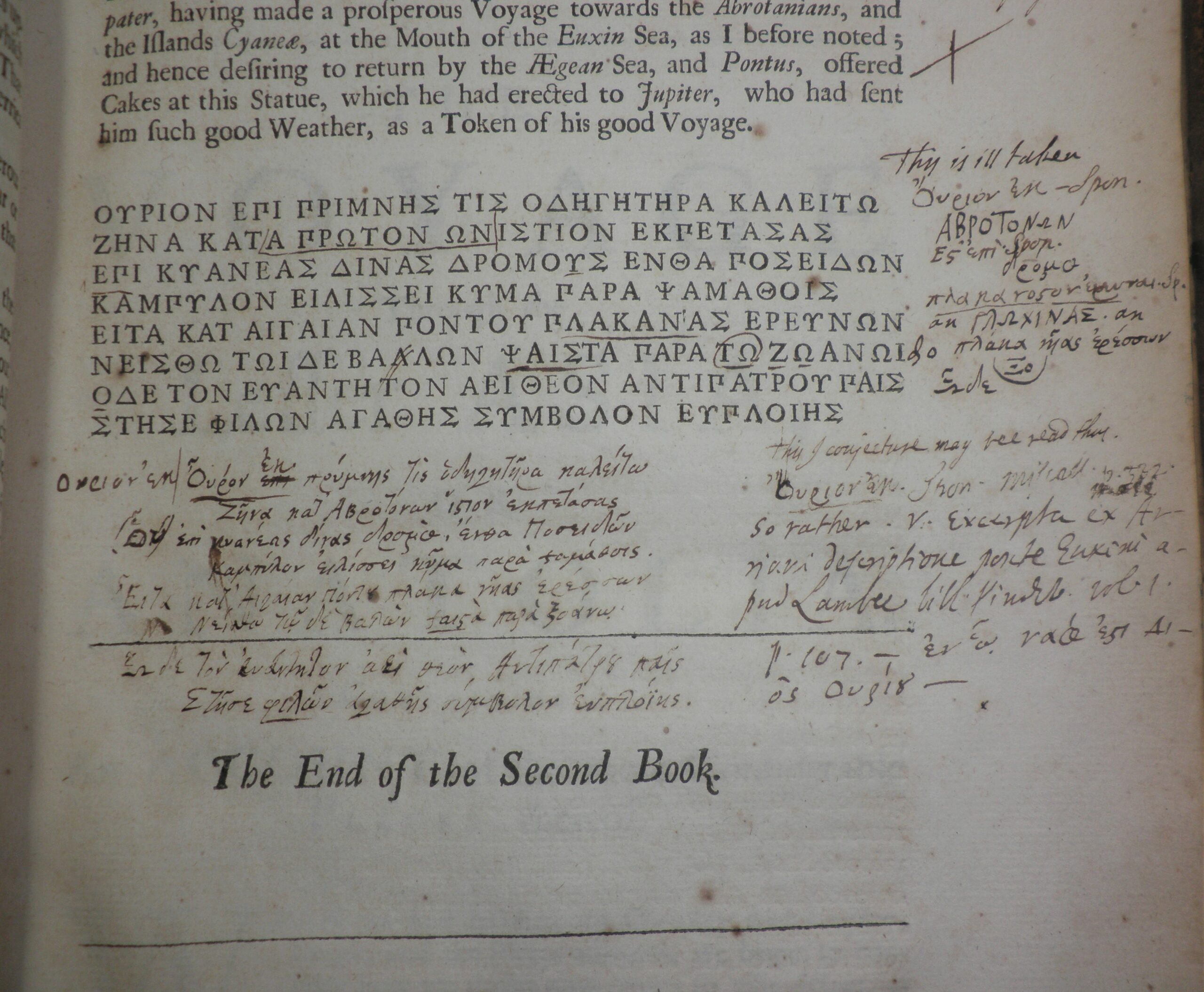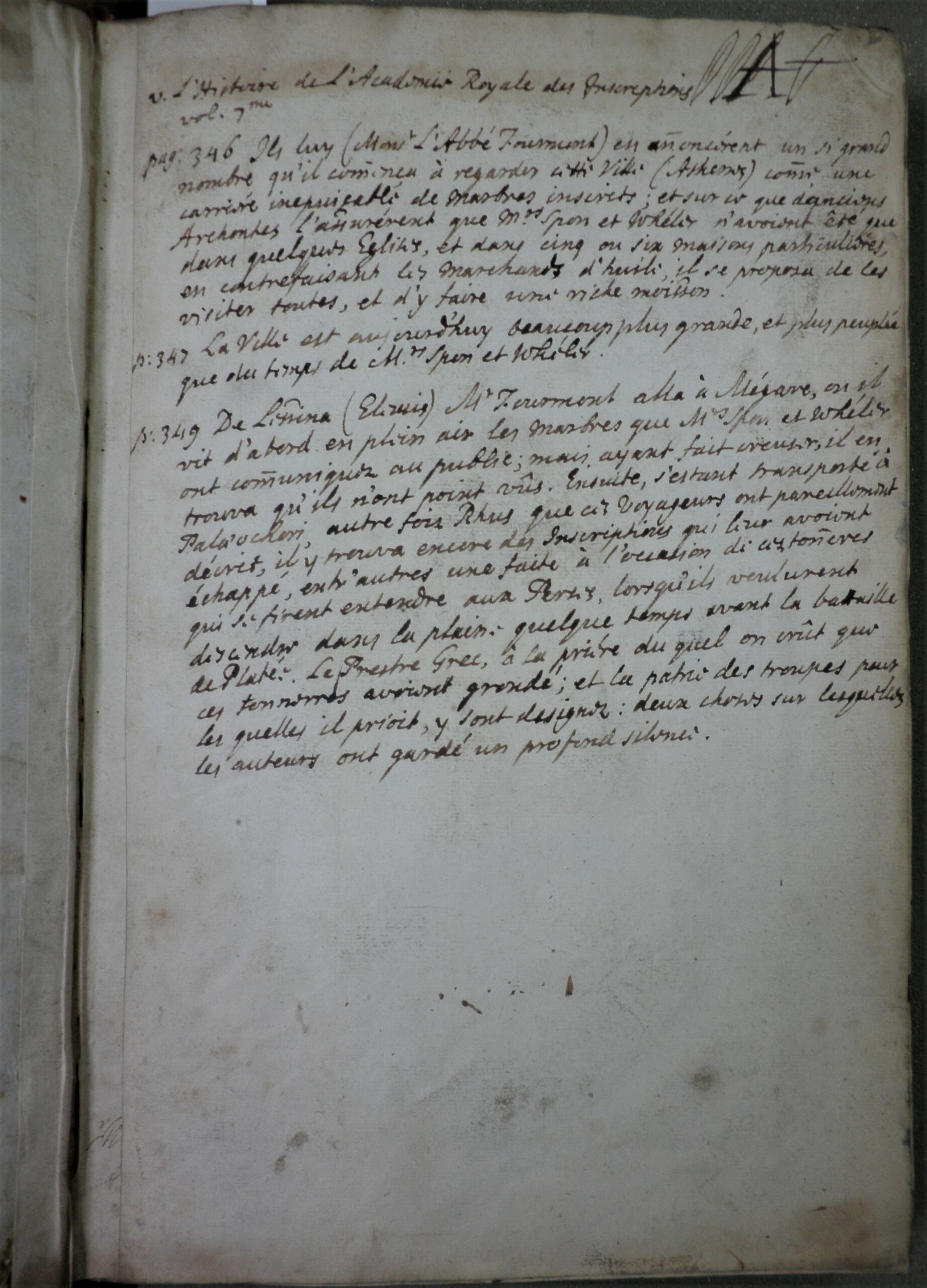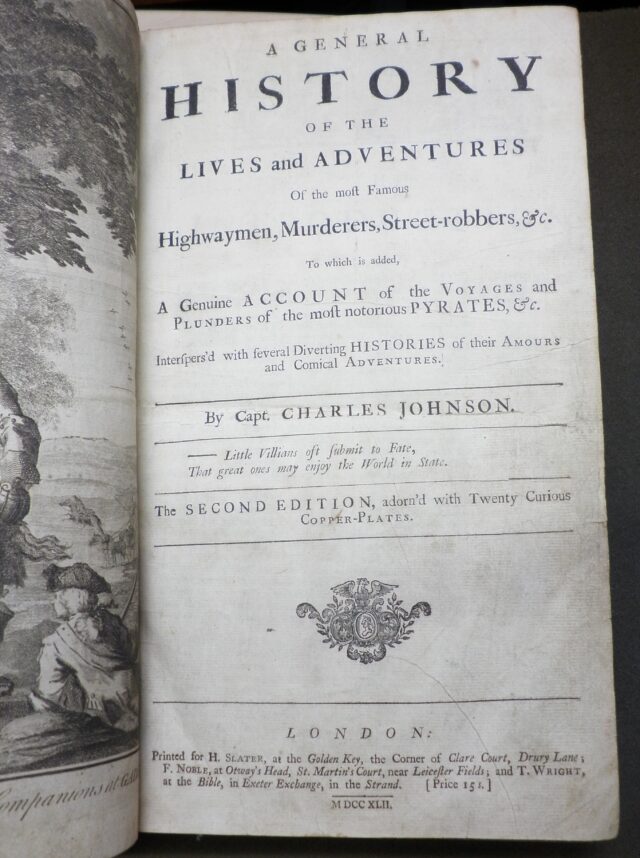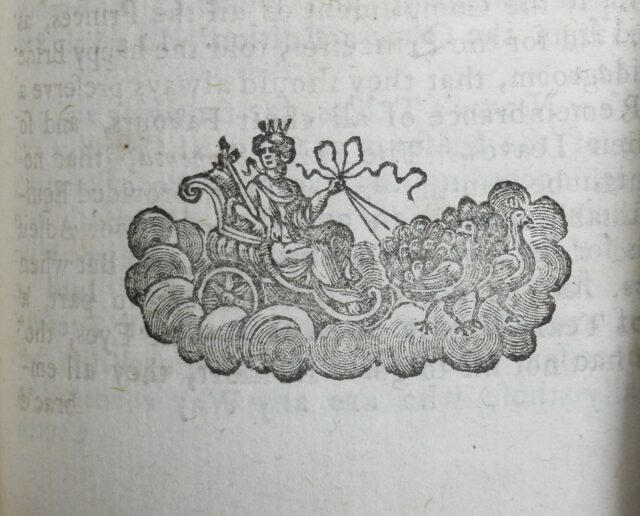An August atlas: Wheler’s Journey into Greece
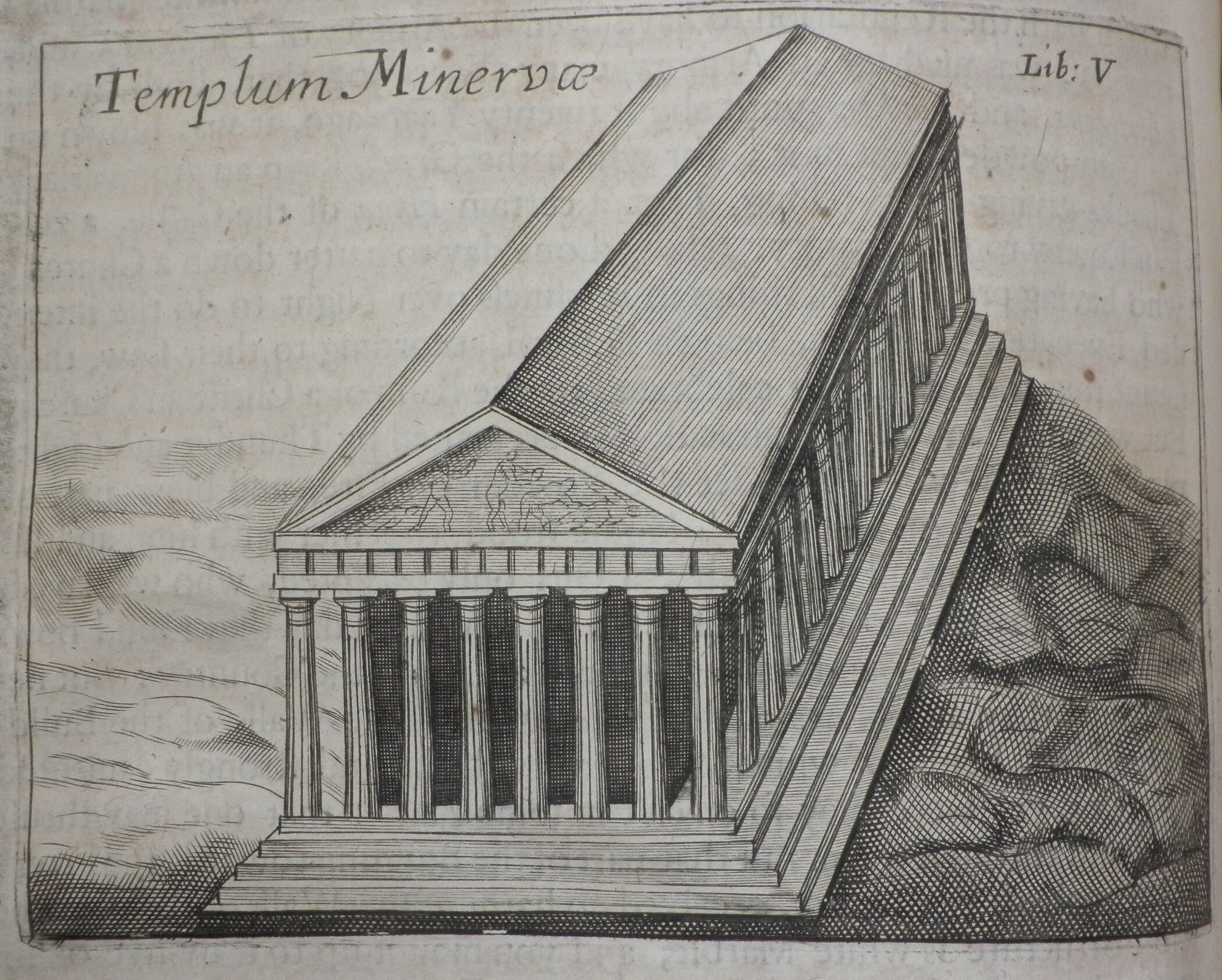
30th August 2019
An August atlas: Wheler’s Journey into Greece
A journey into Greece / by George Wheler Esq.; in company of Dr Spon of Lyons.
London: Printed for William Cademan, Robert Kettlewell, and Awnsham Churchill…, MDCLXXXII (1682)
It is this blog’s practice to devote the vacation month of August to an atlas or travel book and this year we have chosen George Wheler’s A journey into Greece (London, 1682), an account of the travels made in Greece and Asia Minor in 1675-6 by Sir George Wheler (1651-1724) and Jacques Spon (1647-1685).
Wheler embarked on his grand tour to the continent in the summer of 1673 after studies at Lincoln College, Oxford, and the Middle Temple (Wilson, ‘Sir George Wheler’). In 1675, he met the French doctor Jacques Spon in Venice, and travelled with him to Greece in 1675-6. As there were few guidebooks to the eastern Mediterranean at the time of their journey, both Spon and Wheler relied on classical authors, especially Pausanias (Knight, “The travels of the Rev. Sir George Wheler (1650-1723)”, page 23), as their guidebooks. To compensate for this lack, on their return each man published his own account that might serve as a guide to future travellers: Spon’s Voyage d’Italie, de Dalmatie, de Grèce et du Levant… was published first in 1677 (we also have a copy in Worcester), with Wheler’s volume following in 1682.
Wheler’s book (like Spon’s) is beautifully illustrated, with around 100 images. Wheler enjoyed a variety of interests, so in addition to surveying and map-making, this folio volume illustrates inscriptions, coins, plants and buildings, many based on Wheler’s own drawings (see Knight, page 21).
- ‘Astragali Species’, page 435
- ‘A Camelion’, page 247
Wheler included a print of the Parthenon (mistakenly called the ‘Temple of Minerva’), of importance because Wheler saw the temple when it was more or less still complete – before it was heavily damaged during the Venetian siege of Athens in 1687.

‘Templum Minervae’ (i.e. the Parthenon), page 360
Worcester’s copy of this work came to the Library through the bequest of George Clarke in 1736 – it has Clarke’s familiar ‘GC’ monogram on the title page – but from title page inscriptions it appears that Clarke was not the first owner. Indeed, the book seems to have been gifted by the author (‘Ex dono Authoris’) to a Thomas Smith. Although not an unusual name, one might be tempted to identify this Smith with the scholar and Fellow of Magdalen College, Oxford, Thomas Smith (1638-1710; see Harmsen, “Thomas Smith”). Smith must have known Wheler as both were elected Fellows of the Royal Society in 1677. This identification is further suggested, in my view, by the nature of the comments on the text, which are particularly numerous in the earlier books on Turkey and Islamic practices: Smith, an orientalist, was well qualified to judge Wheler’s statements. Firm proof comes on page 261, where the author of the marginalia comments:
‘A mistake. I do not say in my account which I left at Smyrna and which I have printed, that St. Theodore was Bishop of Smyrna – but that the [???] Bishop of Smyrna takes care of the poor Christians of Pergamum. Monsieur Spon makes the same mistake.’
Smith wrote Remarks upon the manners, religion and government of the Turks. Together with a survey of the seven churches of Asia, as they now lye in their ruines: and a brief description of Constantinople (London: Moses Pitt, 1678), where on page 220 he writes of the Christians of Pergamum: “They have one Church dedicated to St. Theodore; the Bishop of Smyrna, under whose jurisdiction they are, taking care to send a Priest to officiate among them”.
It was, therefore, Thomas Smith, himself the author of an account of Turkey and a keen epigrapher, who has engaged so carefully with the Worcester copy of Wheler’s text. Not only did he make remarks upon facts such as the above, but he also corrected inscriptions and printing errors in the text itself (unfortunately, the book is known for its misprints – Wheler corrected by hand the copy he presented to his own college).
If Thomas Smith (1638-1710) is the author of the marginalia inside the book, he is definitely not the author of the handwritten notes on the front free endpaper. These notes copy out pages 346, 347 and 349 from the seventh volume of L’histoire de l’Academie Royale des Inscriptions, which was published in 1733, 23 years after Smith’s death, and three years before Clarke’s. The handwriting looks very similar to that in two letters written by Clarke in 1734 and is perhaps evidence of Clarke’s knowledge of French. Regardless of the identification of the handwriting, however, this was clearly a book that absorbed the interest of at least two early readers.
Mark Bainbridge, Librarian
Bibliography
- Harmsen, T., “Smith, Thomas (1638–1710), scholar”, Oxford Dictionary of National Biography. https://doi.org/10.1093/ref:odnb/25912
- Knight, C., “The travels of the Rev. Sir George Wheler (1650-1723)”, The Georgian Group Journal volume X (2000), pages 21-35
- Wilson, N. G., “Wheler, Sir George (1651-1724)”, Oxford Dictionary of National Biography. https://doi.org/10.1093/ref:odnb/29193









